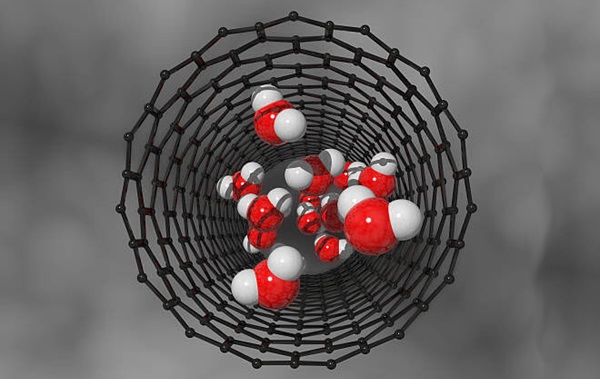Continuous Capsule Network Method for Improving Electroencephalogram-Based Emotion Recognition
Downloads
Doi:10.28991/ESJ-2023-07-01-09
Full Text:PDF
Downloads
Chao, H., Dong, L., Liu, Y., & Lu, B. (2019). Emotion recognition from multiband EEG signals using CAPSNET. Sensors (Switzerland), 19(9), 2212. doi:10.3390/s19092212.
Murali Krishna, N., Sekaran, K., Vamsi, A. V. N., Pradeep Ghantasala, G. S., Chandana, P., Kadry, S., Blazauskas, T., & Damasevicius, R. (2019). An Efficient Mixture Model Approach in Brain-Machine Interface Systems for Extracting the Psychological Status of Mentally Impaired Persons Using EEG Signals. IEEE Access, 7, 77905–77914. doi:10.1109/ACCESS.2019.2922047.
Scherer, K. R., Schorr, A., & Johnstone, T. (2001). Appraisal processes in emotion: Theory, methods, research. Oxford University Press, Oxford, United Kingdom.
Kort, B., Reilly, R., & Picard, R. W. (2001). An affective model of interplay between emotions and learning: reengineering educational pedagogy-building a learning companion. Proceedings IEEE International Conference on Advanced Learning Technologies. doi:10.1109/icalt.2001.943850.
Gottardo, E., Pimentel, A.R. (2019). Inferring Students' Emotions Using a Hybrid Approach that Combine Cognitive and Physical Data. Enterprise Information Systems, ICEIS 2018. Lecture Notes in Business Information Processing, 363, Springer, Cham, Switzerland. doi:10.1007/978-3-030-26169-6_14.
Shu, L., Xie, J., Yang, M., Li, Z., Li, Z., Liao, D., Xu, X., & Yang, X. (2018). A review of emotion recognition using physiological signals. Sensors (Switzerland), 18(7). doi:10.3390/s18072074.
Ekman, P., Friesen, W. V., & Simons, R. C. (1985). Is the startle reaction an emotion?. Journal of personality and social psychology, 49(5), 1416, doi:10.1037/0022-3514.49.5.1416.
Li, Y., Huang, J., Zhou, H., & Zhong, N. (2017). Human emotion recognition with electroencephalographic multidimensional features by hybrid deep neural networks. Applied Sciences (Switzerland), 7(10). doi:10.3390/app7101060.
Hu, X., Chen, J., Wang, F., & Zhang, D. (2019). Ten challenges for EEG-based affective computing. Brain Science Advances, 5(1), 1–20. doi:10.1177/2096595819896200.
Song, T., Zheng, W., Song, P., & Cui, Z. (2020). EEG Emotion Recognition Using Dynamical Graph Convolutional Neural Networks. IEEE Transactions on Affective Computing, 11(3), 532–541. doi:10.1109/TAFFC.2018.2817622.
Kawintiranon, K., Buatong, Y., & Vateekul, P. (2016). Online music emotion prediction on multiple sessions of EEG data using SVM. 13th International Joint Conference on Computer Science and Software Engineering. doi:10.1109/JCSSE.2016.7748921.
Wirawan, I.M.A., Wardoyo, R., & Lelono, D. (2022). The challenges of emotion recognition methods based on electroencephalogram signals: A literature review. International Journal of Electrical and Computer Engineering, 12(2), 1508–1519. doi:10.11591/ijece.v12i2.pp1508-1519.
Bhandari, N. K., & Jain, M. (2020). Emotion recognition and classification using EEG: A review. International Journal of Scientific and Technology Research, 9(2), 1827–1836.
Zhang, J., Yin, Z., Chen, P., & Nichele, S. (2020). Emotion recognition using multi-modal data and machine learning techniques: A tutorial and review. Information Fusion, 59(January), 103–126. doi:10.1016/j.inffus.2020.01.011.
Pane, E. S., Wibawa, A. D., & Pumomo, M. H. (2018, November). Channel selection of EEG emotion recognition using stepwise discriminant analysis. 2018 International Conference on Computer Engineering, Network and Intelligent Multimedia (CENIM). doi:10.1109/CENIM.2018.8711196.
Chen, D. W., Miao, R., Yang, W. Q., Liang, Y., Chen, H. H., Huang, L., Deng, C. J., & Han, N. (2019). A feature extraction method based on differential entropy and linear discriminant analysis for emotion recognition. Sensors (Switzerland), 19(7), 1631. doi:10.3390/s19071631.
Li, J., Zhang, Z., & He, H. (2018). Hierarchical Convolutional Neural Networks for EEG-Based Emotion Recognition. Cognitive Computation, 10(2), 368–380. doi:10.1007/s12559-017-9533-x.
Yang, Y., Wu, Q., Fu, Y., & Chen, X. (2018). Continuous convolutional neural network with 3D input for EEG-based emotion recognition. International Conference on Neural Information Processing. doi:10.1007/978-3-030-04239-4_39.
Jiang, H., & Jia, J. (2019, November). Research on EEG emotional recognition based on LSTM. International Conference on Bio-Inspired Computing: Theories and Applications. doi:10.1007/978-981-15-3415-7_34.
Wardoyo, R., Wirawan, I. M. A., & Pradipta, I. G. A. (2022). Oversampling Approach Using Radius-SMOTE for Imbalance Electroencephalography Datasets. Emerging Science Journal, 6(2), 382–398. doi:10.28991/ESJ-2022-06-02-013.
Wirawan, I. M. A., Wardoyo, R., Lelono, D., Kusrohmaniah, S., & Asrori, S. (2021). Comparison of Baseline Reduction Methods for Emotion Recognition Based On Electroencephalogram Signals. 2021 6th International Conference on Informatics and Computing (ICIC). doi:10.1109/ICIC54025.2021.9632948.
Sabour, S., Frosst, N., & Hinton, G. E. (2017). Dynamic routing between capsules. Advances in Neural Information Processing Systems 30, NeurIPS Proceedings, 4-9 December, CA, United States.
Liu, Y., Ding, Y., Li, C., Cheng, J., Song, R., Wan, F., & Chen, X. (2020). Multi-channel EEG-based emotion recognition via a multi-level features guided capsule network. Computers in Biology and Medicine, 123(March), 103927. doi:10.1016/j.compbiomed.2020.103927.
Tyng, C. M., Amin, H. U., Saad, M. N. M., & Malik, A. S. (2017). The influences of emotion on learning and memory. Frontiers in Psychology, 8(AUG). doi:10.3389/fpsyg.2017.01454.
Cheng, J., Chen, M., Li, C., Liu, Y., Song, R., Liu, A., & Chen, X. (2021). Emotion Recognition from Multi-Channel EEG via Deep Forest. IEEE Journal of Biomedical and Health Informatics, 25(2), 453–464. doi:10.1109/JBHI.2020.2995767.
Chen, J., Jiang, D., Zhang, Y., & Zhang, P. (2020). Emotion recognition from spatiotemporal EEG representations with hybrid convolutional recurrent neural networks via wearable multi-channel headset. Computer Communications, 154(6), 58–65. doi:10.1016/j.comcom.2020.02.051.
Liu, N., Fang, Y., Li, L., Hou, L., Yang, F., & Guo, Y. (2018, April). Multiple feature fusion for automatic emotion recognition using EEG signals. 2018 IEEE International Conference on Acoustics, Speech and Signal Processing (ICASSP). doi:10.1109/ICASSP.2018.8462518.
Zangeneh Soroush, M., Maghooli, K., Setarehdan, S. K., & Nasrabadi, A. M. (2019). A novel EEG-based approach to classify emotions through phase space dynamics. Signal, Image and Video Processing. doi:10.1007/s11760-019-01455-y.
Zheng, W. L., Zhu, J. Y., & Lu, B. L. (2019). Identifying stable patterns over time for emotion recognition from EEG. IEEE Transactions on Affective Computing, 10(3), 417–429. doi:10.1109/TAFFC.2017.2712143.
Mei, H., & Xu, X. (2017, December). EEG-based emotion classification using convolutional neural network. In 2017 International Conference on Security, Pattern Analysis, and Cybernetics (SPAC). Doi:10.1109/SPAC.2017.8304263.
Zhao, Y., Yang, J., Lin, J., Yu, D., & Cao, X. (2020). A 3D Convolutional Neural Network for Emotion Recognition based on EEG Signals. Proceedings of the International Joint Conference on Neural Networks. doi:10.1109/IJCNN48605.2020.9207420.
Liu, Z. T., Xie, Q., Wu, M., Cao, W. H., Li, D. Y., & Li, S. H. (2019). Electroencephalogram Emotion Recognition Based on Empirical Mode Decomposition and Optimal Feature Selection. IEEE Transactions on Cognitive and Developmental Systems, 11(4), 517–526. doi:10.1109/TCDS.2018.2868121.
He, Y., Ai, Q., & Chen, K. (2017). A MEMD method of human emotion recognition based on valence-Arousal model. Proceedings - 9th International Conference on Intelligent Human-Machine Systems and Cybernetics, IHMSC 2017, 2, 399–402. doi:10.1109/IHMSC.2017.201.
Parui, S., Bajiya, A. K. R., Samanta, D., & Chakravorty, N. (2019). Emotion recognition from EEG signal using XGBoost algorithm. 2019 IEEE 16th India Council International Conference (INDICON). doi:10.1109/INDICON47234.2019.9028978.
Pan, C., Shi, C., Mu, H., Li, J., & Gao, X. (2020). EEG-based emotion recognition using logistic regression with gaussian kernel and laplacian prior and investigation of critical frequency bands. Applied Sciences (Switzerland), 10(5), 1–24. doi:10.3390/app10051619.
Garg, D., & Verma, G. K. (2020). Emotion Recognition in Valence-Arousal Space from Multi-channel EEG data and Wavelet based Deep Learning Framework. Procedia Computer Science, 171, 857–867. doi:10.1016/j.procs.2020.04.093.
Huang, Y. D., Wang, K. Y., Ho, Y. L., He, C. Y., & Fang, W. C. (2019). An edge AI system-on-chip design with customized convolutional-neural-network architecture for real-time EEG-based affective computing system. 2019 IEEE Biomedical Circuits and Systems Conference (BioCAS). doi:10.1109/BIOCAS.2019.8919038.
Koelstra, S., Mühl, C., Soleymani, M., Lee, J. S., Yazdani, A., Ebrahimi, T., Pun, T., Nijholt, A., & Patras, I. (2012). DEAP: A database for emotion analysis; using physiological signals. IEEE Transactions on Affective Computing, 3(1), 18–31. doi:10.1109/T-AFFC.2011.15.
Katsigiannis, S., & Ramzan, N. (2018). DREAMER: A Database for Emotion Recognition through EEG and ECG Signals from Wireless Low-cost Off-the-Shelf Devices. IEEE Journal of Biomedical and Health Informatics, 22(1), 98–107. doi:10.1109/JBHI.2017.2688239.
Miranda-Correa, J. A., Abadi, M. K., Sebe, N., & Patras, I. (2021). AMIGOS: A Dataset for Affect, Personality and Mood Research on Individuals and Groups. IEEE Transactions on Affective Computing, 12(2), 479–493. doi:10.1109/TAFFC.2018.2884461.
Eldor, T. (2018). Capsule Neural Networks - Part2: What is a Capsule?. Towards Data Science. Available online: https://towardsdatascience.com/capsule-neural-networks-part-2-what-is-a-capsule-846d5418929f (accessed on August 2022).
Wirawan, I. M. A., & Darmawiguna, I. G. M. (2017). New Concept of Learning Outcomes Assessment in Adaptive Mobile Learning. 2nd International Conference on Innovative Research across Disciplines (ICIRAD 2017). doi:10.2991/icirad-17.2017.49.
Al-Nafjan, A., Hosny, M., Al-Ohali, Y., & Al-Wabil, A. (2017). Review and classification of emotion recognition based on EEG brain-computer interface system research: A systematic review. Applied Sciences (Switzerland), 7(12), 1239. doi:10.3390/app7121239.
- This work (including HTML and PDF Files) is licensed under a Creative Commons Attribution 4.0 International License.



















